It’s not often a Real Time Strategy (RTS) game is released on a console and, let’s face it, there are plenty reasons why. The truth is, the genre is at its very best when enjoyed on a PC due to ever-increasing graphical and processing requirements. I’ve played a few RTS titles on console over the years and always found the experience extraordinarily frustrating (I’m looking at YOU, Conflict Zone…) enough to keep me away from later strategy titles released on consoles.
I couldn’t ignore Sudden Strike 4, an RTS that provides an authentic World War 2 setting. As a fan of historical conflicts, I was cautiously optimistic about how the game would play and if it was worth putting my hard-earned dollars towards.
The answer is… kinda.
Sudden Strike 4 looks incredible. The graphical details provided on each map are interesting, immersive, and really darn pretty to look at. Each stage looks and feels different, providing a wealth of tactical options for you to consider as you advance towards your objectives. Throughout my entire play time on the PS4, I didn’t have any glitches, freezes, slow-down or other graphical hiccups. However, as pretty as the game is to look at, the sound is what really stands out.
To really enjoy this game, you need to wear a headset. I played using a Turtle Beach Stealth 520 and the sound of a column of tanks opening fire on a bunker is like nothing I’ve heard before on a console. Firefights that break out off-screen sound distant as opposed to those appearing right in front of you. Even the voices of the units themselves immerse you in the setting, calmly acknowledging standard move orders in peaceful settings or aggressively shouting to confirm an attack target while under fire.
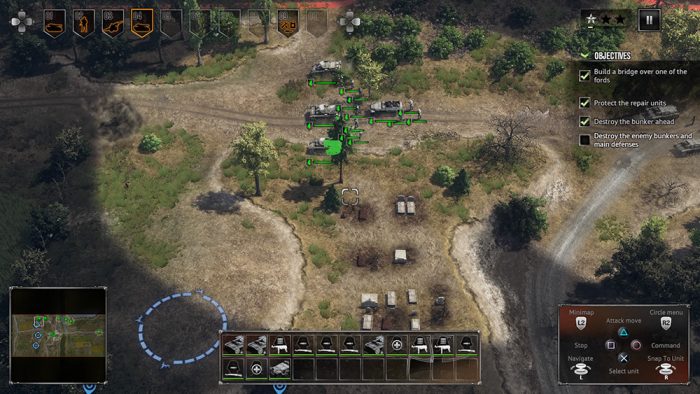
Speaking of the voices, units in each army speak the language you would expect them to. Wehrmacht units speak German, Russian units speak Russian. Where the voice acting falters is in the commands given to the player at the start of a mission and the diary entries at each conclusion. Opening objectives are given with a forced urgency that provides a stark reminder that those lines were spoken by a man in a studio rather than a commander shouting into a radio. As for the diary entries, I broke out in laughter when the man reading entries following Wehrmacht missions spoke with an English accent. Both of these really seemed distracting, but thankfully only rarely impact gameplay.
Another crucial element to Sudden Strike’s immersion is the music. The soundtrack, while not quite as compelling as Hearts of Iron 4’s masterpiece, is very well made, and fits the setting and on-screen action very well. During the game’s calmer moments, there may not be any music at all, allowing you to hear the foliage your infantry walk through or the squeaky gears on your tanks as they roll out. However as your units approach a bunker or an objective, the music picks up and greatly adds to the incredible tour-de-force experience that combat is in this game.
However, the team at Kalypso took it a step further by adding a level of interactivity with the environments. For example, infantry can walk into tall grass and hide from passing enemy units, allowing your troops to set up deadly ambushes for unsuspecting patrols. Ice can be broken on some stages, creating death traps and obstacles for enemies (or your own troops).
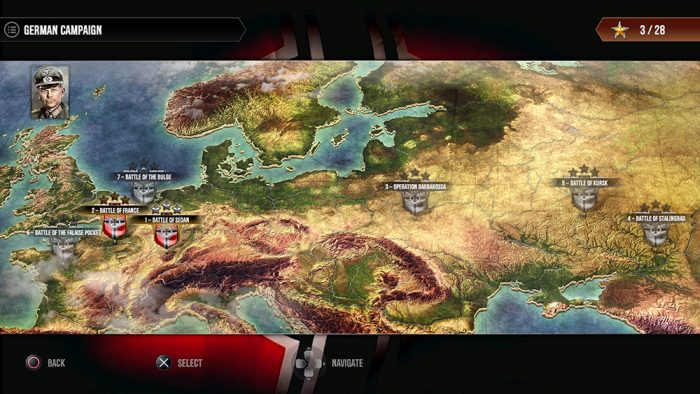
Sudden Strike 4 provides a look at World War 2 through the eyes of the German Wehrmacht, Soviet Union, and English/American Allies. Each force gets 7 missions that span the length of the war. Upon starting the game, all 3 armies have one mission available with the rest becoming unlocked as you clear the prior. That being said, I chose to play chronologically through the campaigns, playing missions on all sides in the historical order they had actually occurred.
Upon selecting an army and a mission, you are then given the choice of a doctrine, personified by some of the war’s most well-known officers. The three doctrines are Armor, Infantry, and Support, with each providing extra boosts to unit types. The doctrines aren’t identical across all three armies, but are similar enough that you won’t have to relearn the entire skill tree every time you choose to play a different army. Once you’ve made those selections, the fight can begin.
Here is where Sudden Strike 4’s flaws start to show themselves. The general structure of gameplay is about making due with the resources you have available. That means careful planning and precise execution is required to pull your troops through the fight. Unfortunately the controls (despite being the best controller-based design I’ve seen for an RTS) are complicated, inconsistent, and challenging. For example, during the heat of battle, one of my more powerful tanks ran out of ammo. I sent in a supply truck to refill that tanks stock by selecting the truck with X and ordering it to refill the tank by pressing O (standard controls for everything from moving to attacking), but all it did was drive up next to the tank on the front line and stop! Turns out I should have pressed X on the truck, and then X again on the tank, something I learned later when I had the time to think and play with the controls.
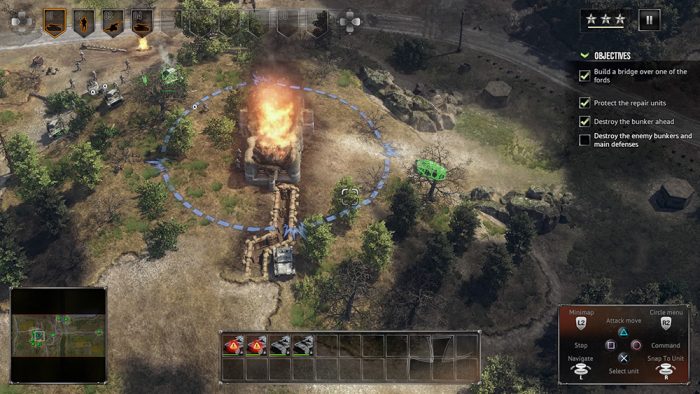
There are many times when the action picks up and it’s easy to get lost in the game’s control scheme. Thankfully, the folks at Kalypso included an option to pause the game by pressing the touch pad, allowing you to issue orders to your troops for strategic deployment, precise unit controls, or diverse attack orders (think Dragon Age’s tactical battle system). Add to that pause a box on the HUD providing basic commands and the easy use of a unit-specific radial menu by holding R2 and you have all the important controls available to you at all times.
One of the easier control mechanisms is the ability to arrange units together into up to 9 saved groups. By selecting the units you want and clicking R3, you can then cycle through and select those groups by tapping left or right on the D-Pad. It can be easy to accidentally tell a platoon of units to do something intended for a different group (like the time I sent an infantry squad behind an entrenched tank to attack its weak rear armor…) but remembering to slow down or pause the game prior to issuing these orders can prevent these mistakes.
Perhaps my biggest complaint with the campaign is the level design. Since this isn’t a game that involves base building, resource collection and army construction, every map will always have the same enemies in the same places every time. One mission in the Wehrmacht campaign has you move your tanks into an ambush by a group of much stronger, entrenched British tanks. My first instinct was to send my tanks behind them to attack them from the rear as entrenched tanks are immobile. As I was issuing those orders, the commander orders me to fall back. I lost all but two of my tanks. While it was my fault, I now know any time I play that mission precisely where that ambush will be waiting for me. This design decision really hampers replayability as every mission loses its thrill after the first playthrough.
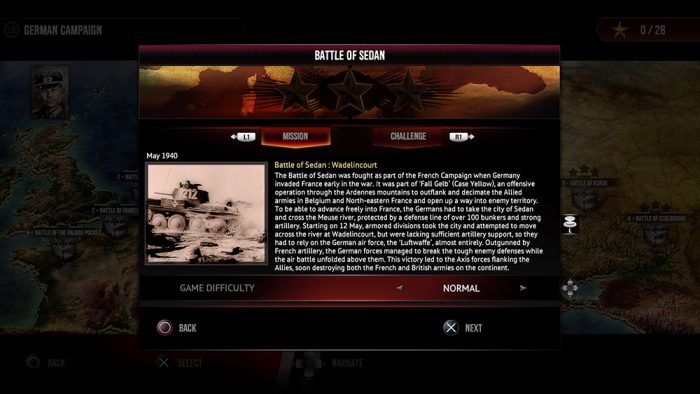
Upon successful completion of a mission, you will be rewarded based on strategic decisions you made during the mission with a star-rating. To earn stars, the game monitors your ability to make tactical decisions during the fight, such as commandeering abandoned vehicles, destroying armored units from the rear, and setting up ambushes. Every time one of these actions is successful, you see an on-screen prompt and an award name (i.e. “Backstabber” for destroying tanks from the rear). The more of these you collect, the better the star rating.
Star ratings are critical as they serve as currency to purchase upgrades for doctrines. Each doctrine for each army has various upgrades that cost anywhere from 1 to 5 stars. Stars earned can be used across all three doctrines, so completing one mission with 3 stars gives you three stars to spend on all 3 of that army’s doctrines. These stars can be earned on any difficulty, but to fully unlock all of the abilities, you’ll need to clear missions with an extra handicap (such as having less ammunition). These challenge missions become available after earning 3 stars on Normal difficulty.
The doctrines provide a great way to upgrade your army, but it can be difficult to know which one to use prior to starting a mission. Add to this the fact that the skills aren’t very different across the armies and the doctrine system feels a little empty. However, I enjoyed unlocking the abilities, seeing how they work, and then replaying previous missions I’d already cleared with the new abilities to really explore the tactical gameplay.
Ultimately, Sudden Strike 4 is a blast to play once you get the hang of the controls. The presentation, varied campaign missions, and skirmishes are bound to keep any RTS fan busy for hours. The first several hours will likely be dedicated to learning the controls and overcoming the frustration that results, but those who manage to stick with it will find a beautiful, rewarding experience.
This review is based on a retail code sent to SideQuesting by the publisher. It was played on a Playstation 4 with a gamepad controller (not on a PC with mouse and keyboard controls).

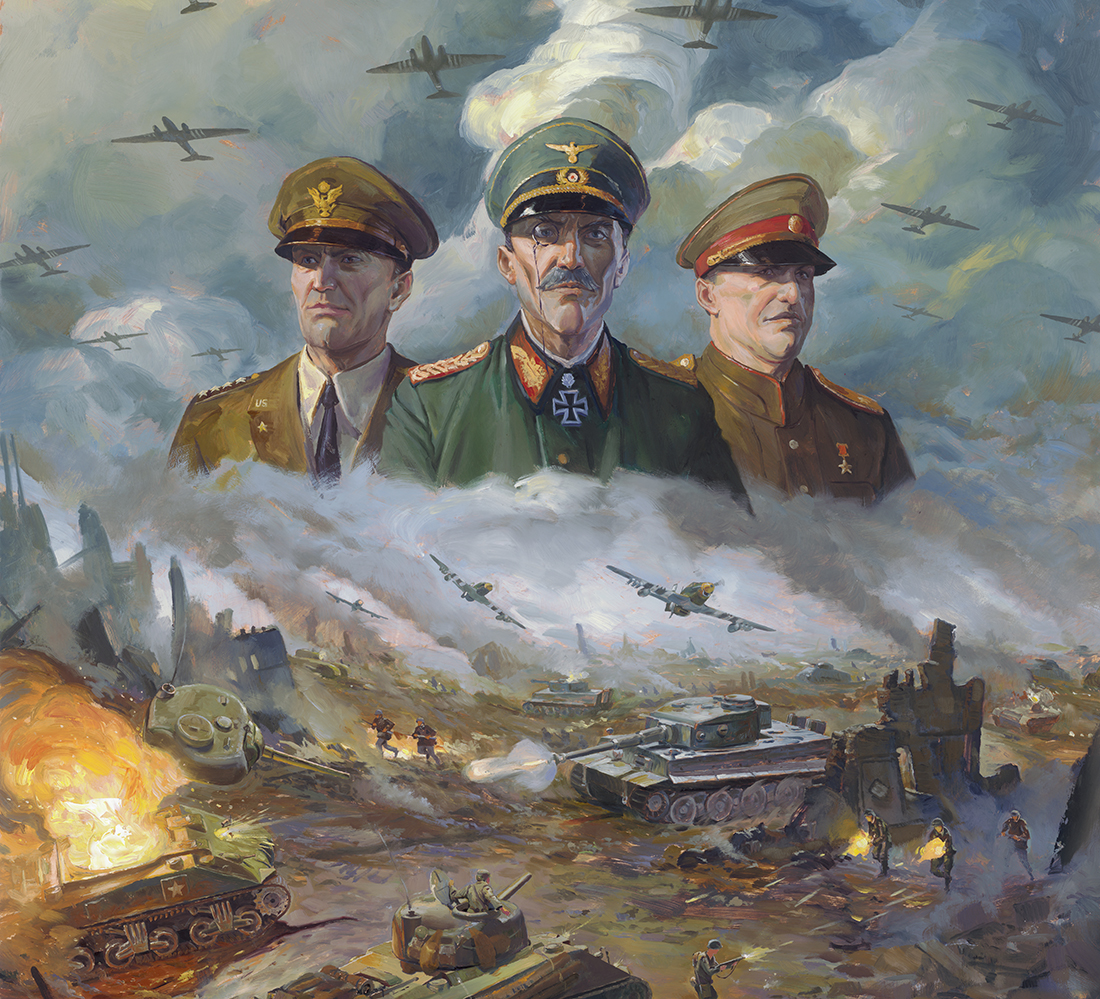
No Comments